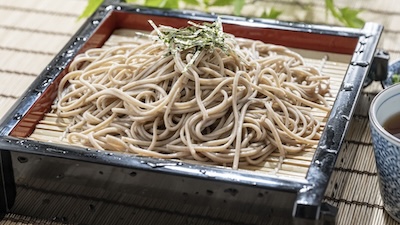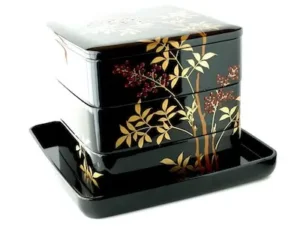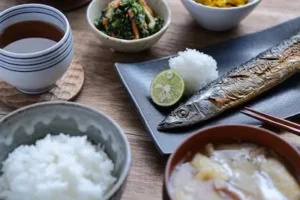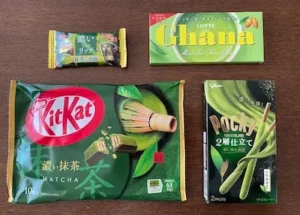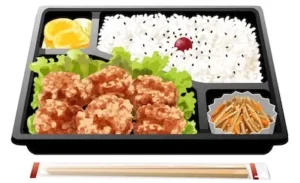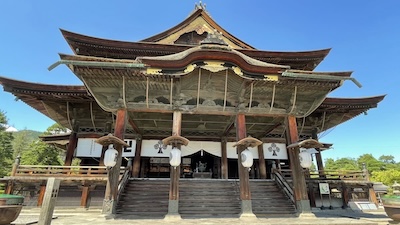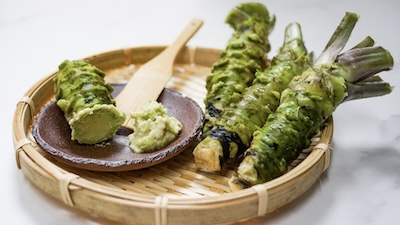
Shinshu Soba: Explore the Flavor, Texture, and Regional Varieties
What Is “Shinshu”?
Japan is known for its rich regional cuisines. One of the most beloved is Shinshu soba—buckwheat noodles from Nagano Prefecture.
“Shinshu” is the old name for Nagano, a mountainous region in central Japan. The area has clear water, high elevation, and big temperature differences between day and night. These conditions are perfect for growing flavorful buckwheat.
Soba made from this buckwheat is famous throughout Japan. It is known for its rich aroma and smooth texture.
In this article, we’ll explore what makes Shinshu soba special. We’ll look at its characteristics, famous regional varieties, and how soba is classified based on buckwheat content.
What Makes Shinshu Soba Special?
Here are some key features that define Shinshu soba:
・Rich aroma: The scent of fresh buckwheat fills your senses with every bite.
・Smooth texture: Thin, firm noodles that go down smoothly.
・Soba-yu culture: After finishing the noodles, it’s common to drink the hot water used to boil them. This water is called soba-yu. People pour it into the leftover dipping sauce.
To be recognized as authentic “Shinshu soba,” the noodles must contain at least around 40% buckwheat flour.
This buckwheat must be produced in Nagano. The regional standard ensures quality and authenticity.
Famous Types of Shinshu Soba
Different areas in Nagano offer their own local soba. Each has unique features.
- Togakushi Soba
This soba comes from the Togakushi region of Nagano City.
It is known for its “bocchi-mori” style—small portions neatly arranged.
The noodles have strong flavor and a firm texture.
They are made with pristine mountain water. - Ontake Soba
This soba is grown near Mount Ontake in the Kiso region.
It is cultivated in high-altitude fields.
The flavor is bold and earthy, with rustic charm.
Soba-making is a deep-rooted tradition in this area. - Sarashina Soba
This is a delicate, white soba made from the core of the buckwheat grain.
It has a clean appearance and a subtle aroma.
The texture is smooth.
It is often seen as elegant and refined.
How Soba Is Classified by Buckwheat Content
Soba noodles can also be categorized by the ratio of buckwheat to wheat flour used:
- Juuwari (100% Buckwheat)
These are pure buckwheat noodles.
They are gluten-free, fragrant, and flavorful.
Because they break easily, making them takes skill. - Nihachi (80% Buckwheat, 20% Wheat)
This is the most common type of soba.
It is smooth, flavorful, and easier to handle.
Well-balanced for both beginners and seasoned soba lovers. - Toichi (About 91% Buckwheat)
This type uses 10 parts buckwheat to 1 part wheat.
It offers strong flavor and a more stable texture.
Compared to juuwari, it is easier to work with.
Savoring Shinshu Soba on Your Journey
Shinshu soba reflects the nature, culture, and craftsmanship of Nagano. Its deep aroma, smooth texture, and simple elegance make every bite satisfying and memorable.
Whether you’re enjoying it at a local soba restaurant on your travels or trying it at home, soba fits the Japanese spirit perfectly. People say “Itadakimasu” before eating and “Gochisousama” after a meal.
If you visit Nagano, don’t miss the chance to try a bowl of Shinshu soba. It’s a taste of Japan’s heart and tradition.
Did you know that in Japan, soba is often enjoyed with freshly grated wasabi?
If you’re curious about real wasabi, take a look at this article:
→ Fresh Wasabi (生わさび) in Japan – Flavor, Tradition, and Culture
◆ Would you like to practice speaking Japanese? ◆
In my lessons, you can use Japanese a lot and learn to speak naturally with me.
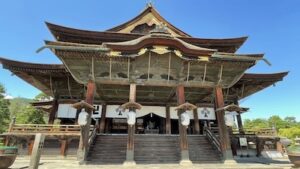
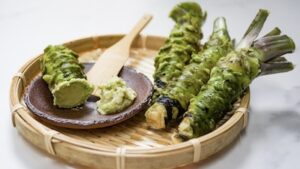
信州?
日本には地域ごとにさまざまな「ご当地の味」があります。その中でも特に多くの人に愛されているのが「信州そば」です。
「信州(しんしゅう)」とは、現在の長野県のことを指す古い呼び名です。山に囲まれた自然豊かなこの土地は、夏と冬、昼と夜の寒暖差が大きく、蕎麦の栽培に適した環境です。
そんな信州で育った蕎麦から作られる「信州そば」は、香り高く、のど越しがよいと全国にファンがいるほどです。
今回は、信州そばの特徴や代表的な種類、そして蕎麦粉の違いについてご紹介します。
信州そばの特徴
信州そばには、次のような特徴があります。
- 香りが豊か:信州のそばは香りがいいです。食べた瞬間に蕎麦の風味が口いっぱいに広がります。
- のど越しが良い:細めでコシのある麺は、つるっとしたのど越しが魅力です。
- そば湯も楽しめる:蕎麦をゆでた後のお湯「そば湯」。つゆに入れて飲むのも信州の楽しみ方の一つです。
長野県では、地元で作られたそば粉を約40%以上使ったそばが「信州そば」として認められています。品質が保たれている点も、多くの人に支持されている理由です。
信州そばの代表
信州には、地域によってさまざまな特徴をもった蕎麦があります。
- 戸隠(とがくし)そば
長野市の戸隠地区で有名なそばです。
「ぼっち盛り」と呼ばれる、そばを小分けにして盛りつける独特のスタイルが特徴。
戸隠の冷たい水と清らかな空気で育ったそばは、香り高く、コシの強さでも知られています。 - 御嶽(おんたけ)そば
木曽地方の御嶽山(おんたけさん)周辺で親しまれている蕎麦です。
標高の高い場所で栽培されるそばは、風味豊かで力強い味わいが特徴です。
そば打ち文化も地域に根づいており、素朴でどこか懐かしい味が楽しめます。 - 更科(さらしな)そば
そばの実の中心だけを使った、白くて上品な蕎麦です。
のど越しが良く、見た目も美しいため、女性にも人気があります。
そばの香りはやや控えめですが、繊細な味が魅力です。
蕎麦粉の割合による分類
そばは、使われているそば粉と小麦粉の割合によっても種類が分かれます。
- 十割(じゅうわり)そば
そば粉100%で作られた蕎麦。
そば本来の香りと味をしっかり楽しめます。
つなぎを使わないため、切れやすく打つのが難しいと言われます。 - 二八(にはち)そば
そば粉80%、小麦粉20%で作られた蕎麦。
香りと食感のバランスがよく、一般的に多くのお店で提供されているのがこのタイプです。 - 外一(といち)そば
そば粉10に対して小麦粉1を加える、つまりそば粉が約91%の贅沢な蕎麦です。
十割よりも打ちやすく、香りもしっかりと感じられます。
旅先で味わう信州の一杯
信州そばは、自然豊かな長野の土地と人々の手仕事から生まれた、日本が誇る味のひとつです。
香りやのど越し、見た目や食感など、そばの奥深さにふれることで、食べる時間が豊かになります。
旅先で食べる一杯も、自宅でゆっくり味わう一皿も、そばには日本人の「いただきます」と「ごちそうさま」がよく合います。
信州のそば処で、香りと風味に満ちた一杯をぜひ味わってみてください。
そばをよりおいしくするのが「わさび」です。日本では、すりおろした生わさびを使うこともあります。
風味や使い方については、こちらで詳しく紹介しています。
→ Fresh Wasabi (生わさび) in Japan – Flavor, Tradition, and Culture
日本語で広がる、日本文化の世界へ。
体験レッスンからはじめませんか。

